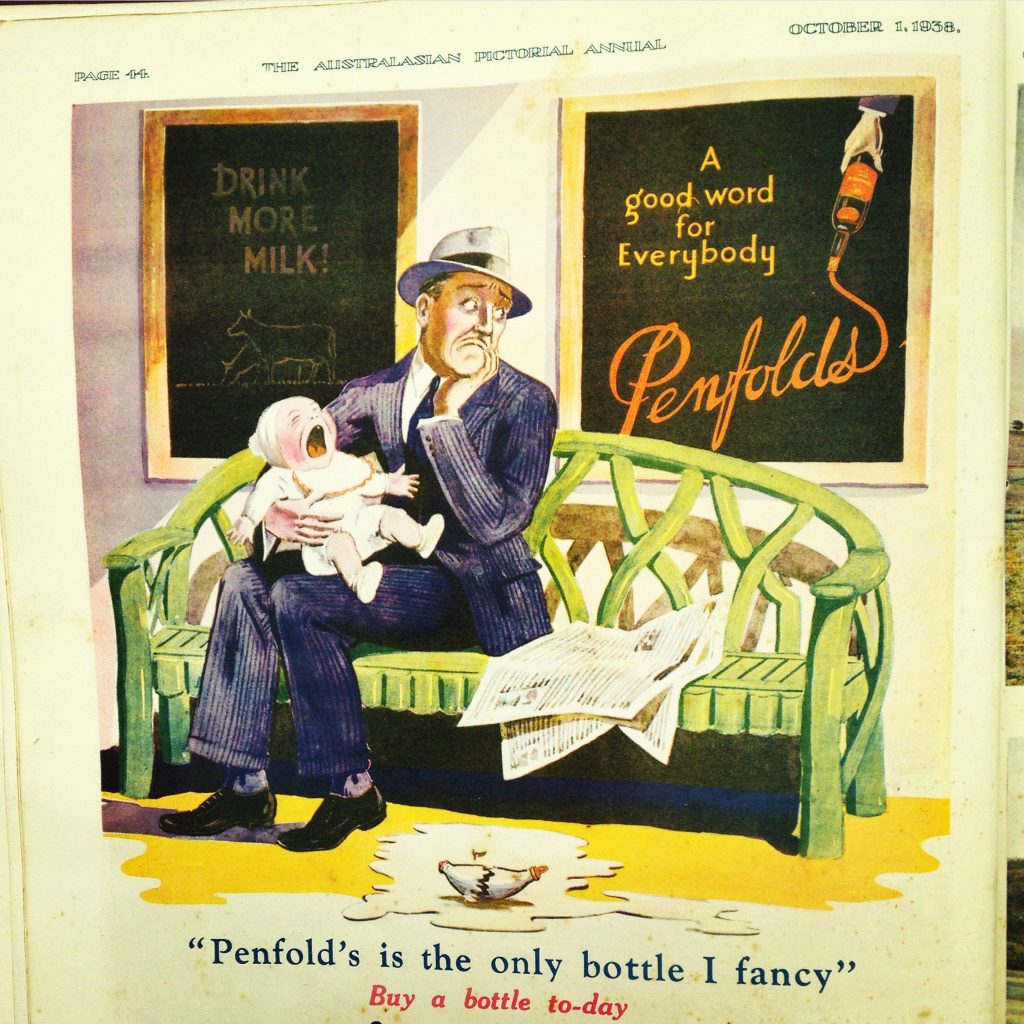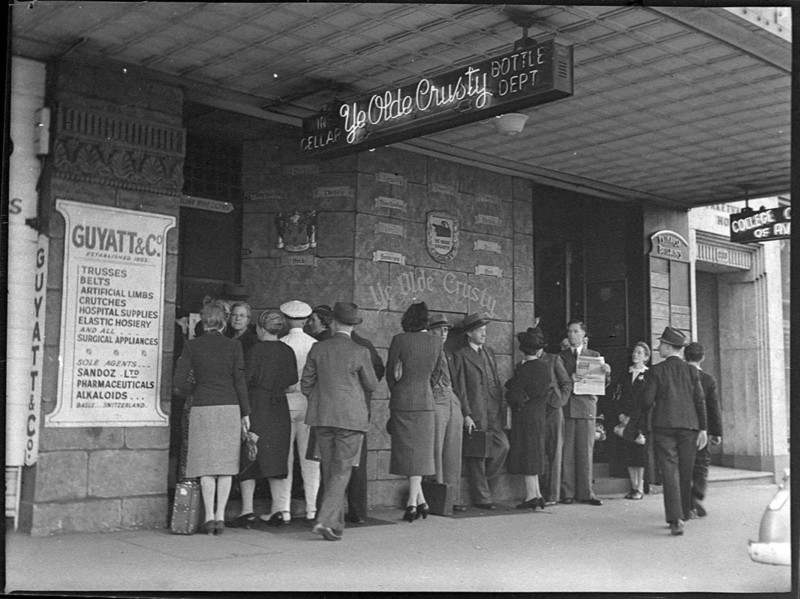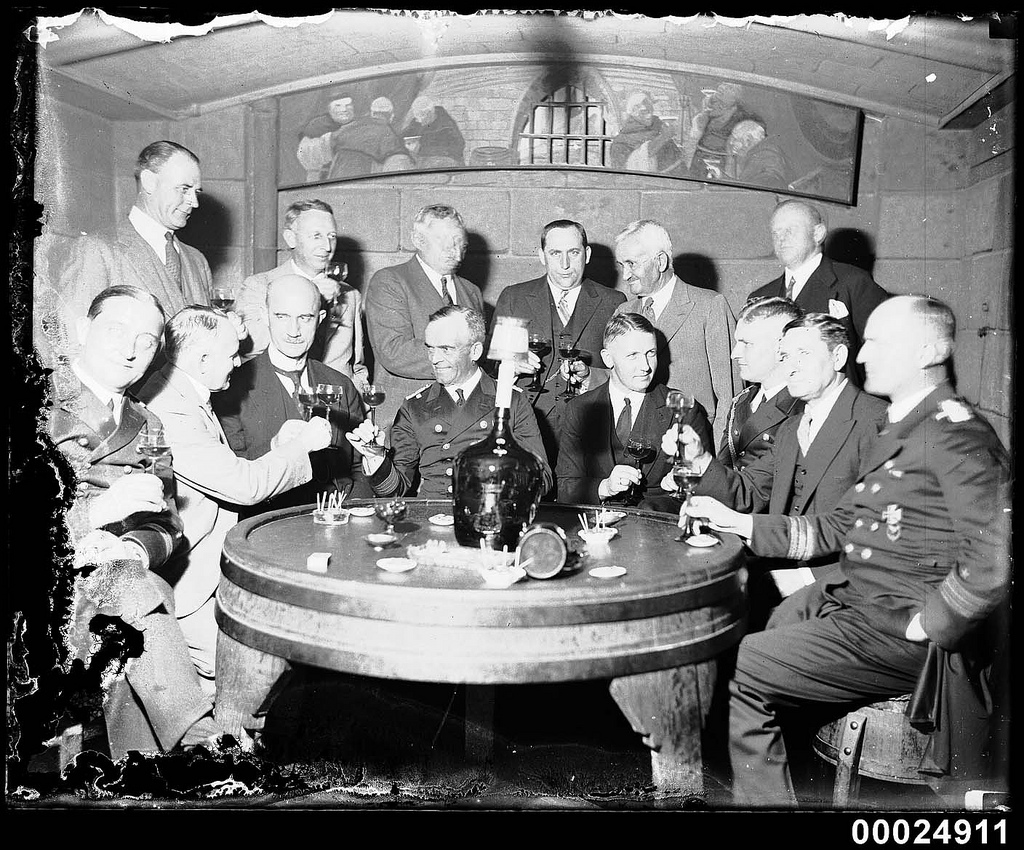
Penfold’s advertisement in the Australasian Pictorial, 1 October 1938, @MuseumMinx. State Library NSW
This year’s NSW Food and Wine Festival have just finished and they featured an array of culinary delights, celebrating the many cultures present in Sydney. But our culinary tastes weren’t always this eclectic! I spoke to Mitch on 2SER Breakfast this morning about how our strong ‘foodie’ nature, became an entrenched part of this city’s culture.
Nowadays, you can walk into any one of the many wine bars and restaurants of Sydney and be shown an extensive wine list and an array of scrumptious dishes. But back in the 1960s and 1970s, the idea of international restaurants and wine bars becoming permanent fixtures on the city’s streets was quite novel. The influx of new immigrants from across Europe after World War II, signalled the introduction of new beverages and dishes. One of the most popular precincts to experience these exotic delights, was the Spanish Quarter in Liverpool Street.
Bodegas, or wine cellars, were in Sydney as far back as the 19th century and they were not uncommon in and around Oxford Street and Darlinghurst. Ham and beef shops and bodegas sprung up in these areas offering such delicacies such as chorizo and empanadas. In the 1930s, the German-born wine connoisseur Leo Buring set up an establishment opposite Bridge Street in George Street, which he called ‘Ye Olde Crusty Cellars’. People lined up outside for their special vintage wines and the venue hosted many distinguished guests.
[slideshow]


[/slideshow]
(Images above depict Ye Olde Crusty Cellars. Courtesy of State Library NSW and Australian National Maritime Museum).
Some of the more traditional drinking holes were still popular among Sydneysiders. Marble Bar opened in 1893 and was decked out in, unsurprisingly, marble, as well as stained glass, mirrors, mahogany and elaborate paintings. Though the hotel in which it was situated was demolished in the 1970s, it was carefully dismantled and reassembled and is now in the Hilton Sydney in George St. The 1966 film They’re a Weird Mob features a ridiculous scene in the bar before it was dismantled, where a patron explains the Australian accent to film’s main character, Italian migrant Nino Culotta.
(See more clips at Australian Screen).
Despite the often xenophobic sentiments portrayed in some media at the time, in other cases, the merits of these new cultures were explored. One 1970 article in the Australian Women’s Weekly features an array banquet style meals. It notes: ‘Australian cuisine has been greatly enriched in the past few years by the dishes introduced to it by migrants. And probably nowhere is the traditional food of European countries better presented and served than at the international clubs.’ If you’re struggling to picture it, think of the lavish spreads you would find in those classic 1970s Women’s Weekly cookbooks – a seminal publication and a staple for any experimental cook. In just a few easy steps, you could make your own German Black Forest cake, baked macaroni or Maltese trifle.
Gradually, many of these old wine bars became run down, serving cheap wines, sweet cherry or port with lemonade. And many of the old restaurants have been purchased by investors, indeed only recently the Nippon Club in Macquarie Street, which had been serving Japanese food surrounded by 1970s decor for over 40 years, was replaced. Despite the rise of new trendy bars, you can still get a jug of Sangria in the Spanish Quarter and eat a plate of pasta in one of the city’s oldest Italian restaurants. They may be remnants from a different time, but they are still traces of retro Sydney for the enthusiastic foodie.
Listen to my Dictionary of Sydney segment at 2SER radio. For other interesting segments, see my Dictionary of Sydney project post and visit the Dictionary of Sydney blog.
